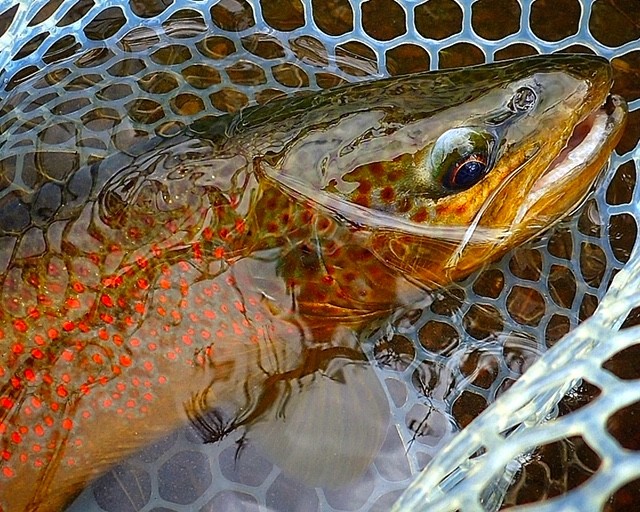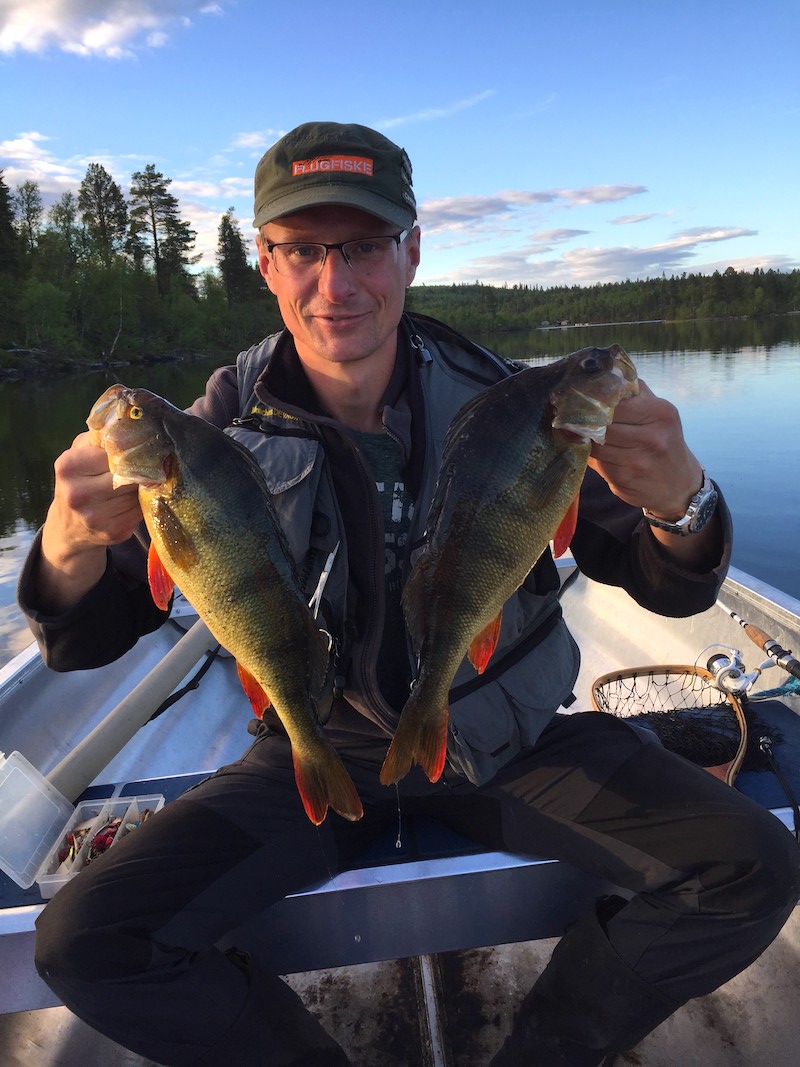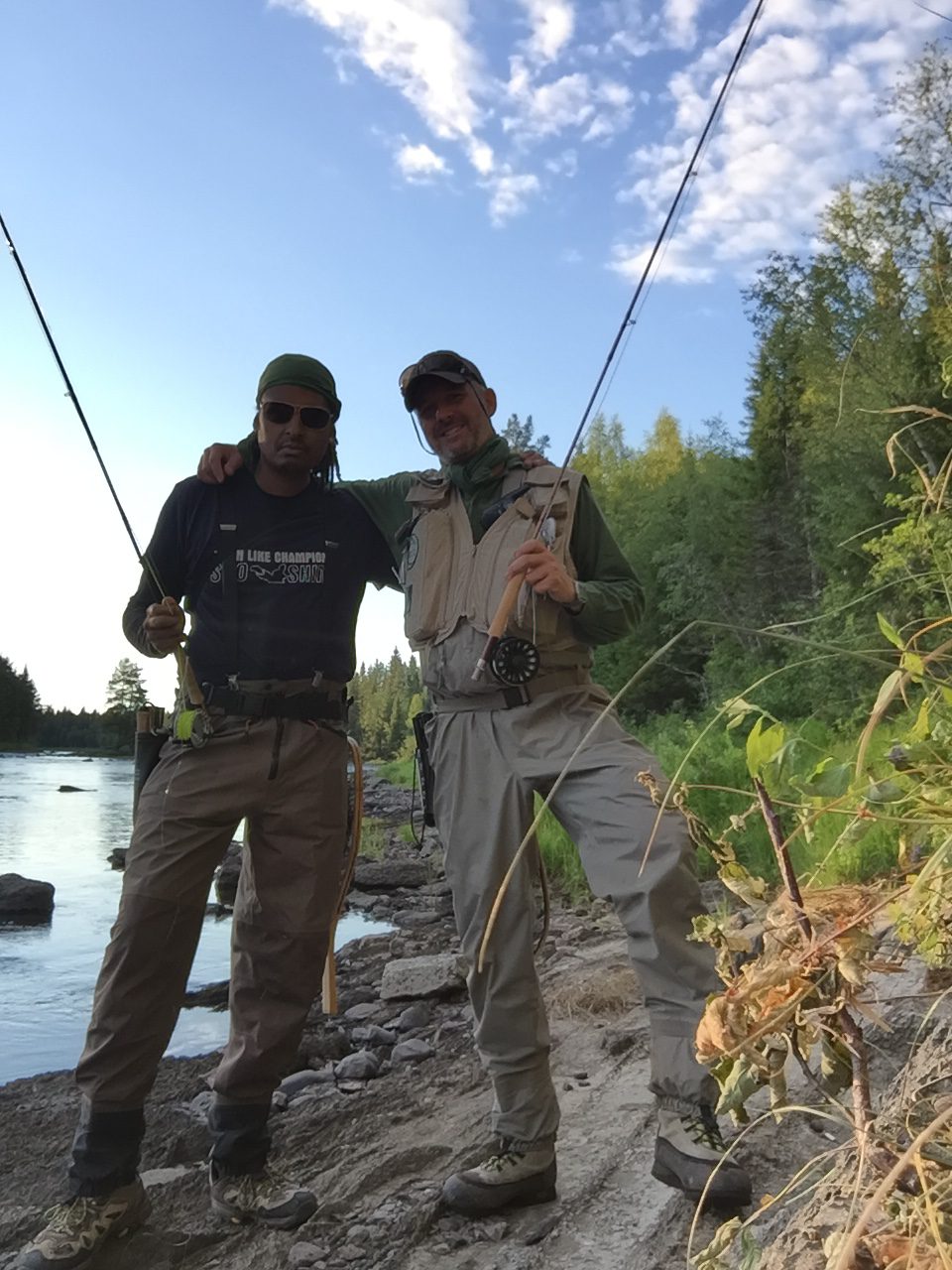Dream Fishing top tips
Some anglers that visit Jämtland Härjedalen might not have any previous experience of fishing in the waters of northern Sweden. Some of our species of fish - such as brown trout, Arctic char and grayling - require specific skills of the angler. The climate and nature are other aspects of fishing that may feel different. We therefore modestly present a number of small things worth considering.
Skittish fish species
Brown trout, Arctic char and grayling are skittish. Move carefully when it is sunny and the waters are still - mind where your shadow falls. Keep a low profile, crouch down or even crawl towards to the water’s edge.
Faithful friend
The fir tree is the angler’s best friend. It protects you from wind and rain and even if it pelts down with rain you will always find dry twigs closest to the trunk. Break off and squeeze together a small bunch and you have the beginnings of a campfire.
Our winds
Cold north-westerly winds are never good, either for the angler or the fish. Winds from the North Sea sometimes sweep down over our region. However, when the wind abates and shifts to a southern wind, life is good. The air warms up and as if by magic the fish start to wake up again.
Getting going
Morning and evening are usually good times to fish, however a bit of rain or snow or a change in weather can get the fish going at any time. Keep an eye on the skies, the weather changes quickly in the mountains. Another helpful sign is the moon - many people think that fishing is best during a new moon (when the moon looks like a comma).
Light nights
Fishing is also good during the light summer nights. Sometimes however - especially in clear weather - cold morning mist can dampen the willingness of the fish to bite. On late summer nights, fly fishing for Arctic char at the outlets of mountain lakes is a very special experience.
Circulating char
Large schools of Arctic char can often be found at 10 - 20 meters’ depth, or just under the ice, or in the summer unobtrusively patrolling just below the surface. These circulating schools of Arctic char are a challenge for the angler - alluring yet difficult to catch. A small black fly, preferably pulled along the surface, can trick the Arctic char to strike. A small spinner can also work. But the best approach in larger lakes is trolling by boat using a long spinner. Row slowly and preferably in a zigzag pattern. If you find a school of Arctic char deep down, pass over the same spot a few times.
This is where you’ll find us
Headlands are often good places from which to fish. The fish often prefer to stay close to the edge where insects float by. As a rule of thumb, you find the grayling and the brown trout close to the shore in lakes and tarns, while the Arctic char remains further out. In streams, rivers and currents the brown trout likes to hide under overhanging bushes by the river’s edge, in hollows and amongst rocks. The grayling stays more in the open water.
Open the stomach
Look into the stomach of your cleaned-out fish. The content - insects, amphipods, shells, ants etc - reveals what the fish currently prefers to feed on. People often notice that the stomachs of the fish are completely full when they are most actively feeding. You would think that the fish are most likely to bite when their stomachs are empty.
Ice fishing tips
When ice fishing for Arctic char it’s good to use a shiny “spoon” with a fly/lure on a 15 cm long trace. Use maggots as bait. Mix long pulls on the line with short tugs. Let the “spoon” hit the bottom. What we call the “Char shake” can be effective when the Arctic char is stubborn. That’s when you kind of vibrate the ice fishing rod in your hand. Mormyschka ice fishing jigs or flat jigs also work very well when ice fishing for Arctic char and brown trout.
Fun with sight ice fishing
For early spring sight ice fishing for grayling and whitefish, you use a small jig that should be moved using tiny, tiny shaking movements, interchanged with some longer tugs. Then you have to give one distinct tug at the right time to hook the fish. A very exciting and fun way to fish.
The mystique of the streams
Fishing in streams with bait and hook using a long rod is something that younger anglers in particular enjoy. Stealth fishing! Remember to check that the stream or brook is not a reproduction area for wandering brown trout.
The “big game” of the lakes
Trolling using wobblers or spoon lures is popular with anglers looking for large brown trout. Predominantly in the larger lakes there is often a population of very large brown trout.
Fishing in the mountains
Spinning reels and casting reels using spoon/jig/spinner lures can be effective in mountain tarns. Not to mention the fly rod. There’s plenty of space behind you for the backward swing and the mountain trout’s violent strike on the dry fly can be felt all the way down to your toes. At many of the Dream Fishing camp sites you can learn the basics of fly fishing.
Nature’s refrigerator
Don't carry your catch in a plastic bag - use a wicker fish-basket instead. Gut and clean the fish as soon as possible. Wipe it down but do not rinse it in water. Keep the fish cool - a damp hole in the mire is a natural fridge.
Eating outside
Cooking fish on the shore is part of the whole experience. Here are a few simple recipes:
"Grilled and smoked fish"
Open up the fish. Cut away the backbone removing as much of the other bones as possible at the same time. Salt the meat side and place the fish in a grilling basket on the embers of your campfire with the skin side down. Finish off with the smoking - place some fir branches or juniper twigs on the embers and put the fish meat-side down on top.
Condiments: Potatoes wrapped in foil and baked over the embers. Mix together some sour cream, chopped leeks and red fish-roe. Enjoy!
“Fish grilled on a stick”
Open out the fish. Rub it with salt or, even better, put it in a plastic bag for half an hour with 4 litres of water, 30 cl of salt and a bit of sugar. Make forks from branches and sharpen the ends. Stick the sharp ends of the fork in the skin of the fish so that it is stretched out and place the forks 2 to 3 centimetres from the embers. Turn them over every now and then.





